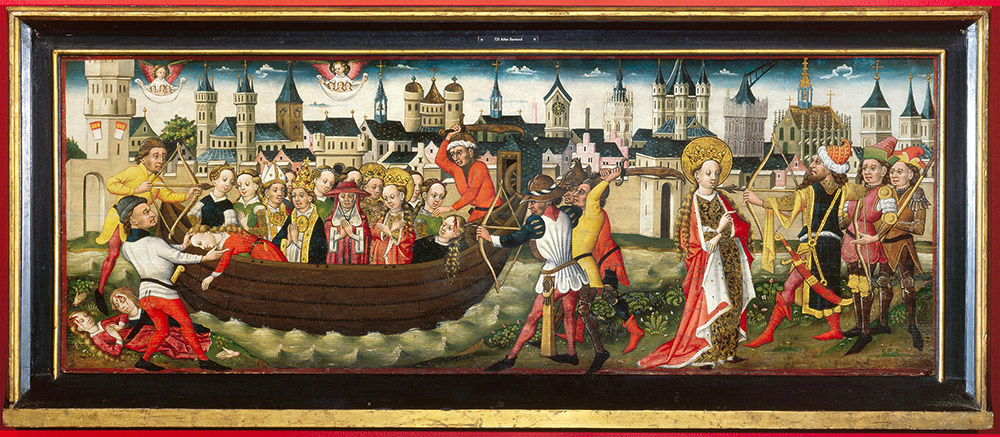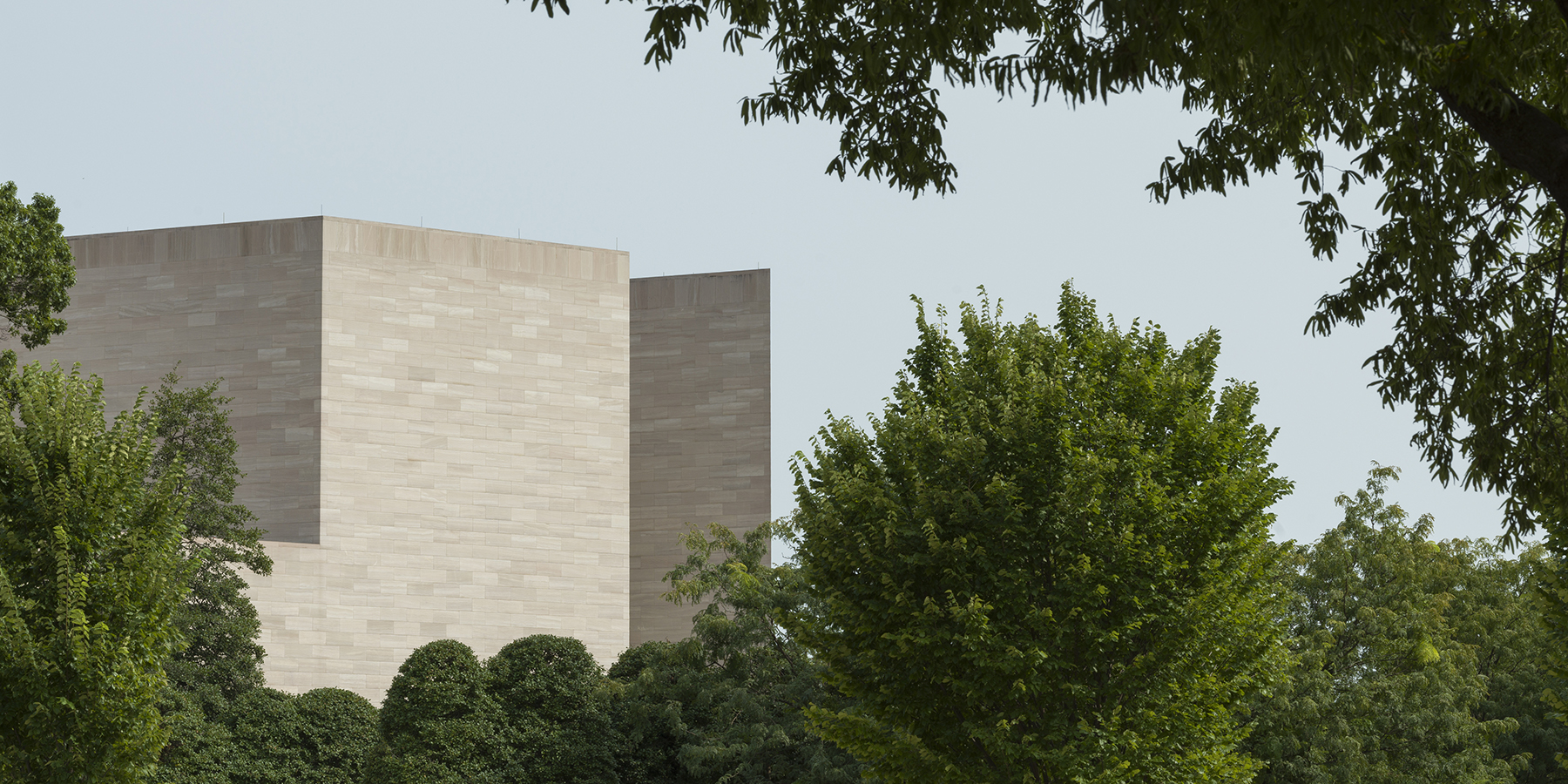Andrew Sears
The Sacred and the Market: Reliquaries and Urbanism in Medieval Cologne

Master of 1456, Legend of Saint Ursula: Arrival in Cologne and Martyrdom, c. 1450/1460, Wallraf-Richartz-Museum, Inv.-Nr. WRM 0721. Photo: © Rheinisches Bildarchiv Köln, rba_c009802
In 1106, as Cologne was expanding its city walls, a group of masons discovered the purported Roman mass grave of Saint Ursula and the 11,000 Virgins. Under the supervision of neighboring religious houses, the martyrs’ bodies were excavated and exported on what we might call a commercial scale. At least 1,800 skulls were distributed among Cologne’s 12 parish churches, and countless others were translated as ecclesiastical gifts across the archdiocese. By the 14th century, as the Rhineland became increasingly urbanized, the relics began figuring in the regional economy. Some went into the hands of secular elites and others moved along Hanseatic trade routes. Churches that had long possessed relics of the 11,000 Virgins commissioned new types of sumptuous containers atypical of traditional treasury arts. Rather than being made from precious metals and stones, they were fashioned by local craft industries and secular laborers. Wooden busts were produced in the Rhineland, painted boxes were made in Cologne, and silk veils were sewn and embroidered for skull relics in the Low Countries. Ursula and her companions came to be patrons of economic activity and products of it.
This dissertation explores the ways in which relics, defined as priceless according to canon law, became intertwined with the market. On the one hand, this is a study of mercantile culture affecting understanding of sacred objects and their value: the commoditization of religion, as it were. On the other hand, I put pressure on such a secularization narrative and consider the persistent role of holy patrimony in understanding urbanism. Relics’ and reliquaries’ proximity to the market raised vital questions about the ethics of sacred and secular city life and its administration. How could the sacred be valued, and who had the power to decide? Did mercantilism stem from commercialism or saintly patronage? Who should manage marketplaces—temporal or religious powers?
Each chapter focuses on a location in the Cologne archdiocese with its own craft tradition and examines the debates around the fashioning of reliquaries for the 11,000 Virgins. The first chapter looks to the gilt silver châsses commissioned by Margaret the Black, Countess of Flanders and Hainaut (r. 1244–1280), who intervened in the ecclesiastical relic trade in order to enact her political agenda. While Margaret’s commissions do not appear any different from other reliquaries, their patterns of circulation were. Her most sumptuous gifts went to the borders of her territory and beyond—to powerful Benedictine and Cistercian abbeys that managed trade canals between Flanders and France and that had historically sided against her. Through this rather early and exceptional instance, treasury arts can be seen to have a manifold kind of currency, aiding in the establishment of economic allegiances and the negotiation of geopolitical borders.
The second and third chapters consider the implications of reliquaries made of “vernacular” materials, namely wooden busts and painted caskets. Starting in the late 13th century, Cologne’s guild of woodworkers serially manufactured wooden busts, about 200 of which still survive. The choice of walnut and oak is often understood to be the result of economic constraint, yet the degree of output suggests that the material was a means through which the objects were understood. The production of busts was key to Cologne’s rise to fame as one of Northern Europe’s largest craft centers, exporting wooden sculpture across Germany, France, and the Netherlands. The martyrs’ entanglements with marketing were, in turn, later expressly thematized in the painted reliquary caskets from Cologne’s convent of the Holy Maccabees. Ursula and her companions are shown sailing to Cologne’s trade partners along the Rhine and martyred in front of one of the city’s earliest skyline depictions.
The final two chapters turn to the convents of Herkenrode and Roermond, where the sisters dressed their Cologne relics with linen wrappings, silk veils, and crowns of wire, thread, and glass beads. Through examining the stages of production—weaving, spinning, sewing, and embroidery—I demonstrate the degree to which religious labor became increasingly subject to market regulation. Throughout the region, nuns became involved in the textile industry and were often reprimanded for overproducing their wares, selling it to merchants, and violating their poverty vows.
In progressing through these case studies that span the 13th through 15th centuries, I attempt to modernize the “premodern” and demonstrate its sophistication in theorizing its own growth. Discussions of secular, mercantile society streamline some of the most exciting and complicated negotiations of the High and Late Middle Ages on the relationship between religion and economics. Arising are questions of ethics, power, and responsibility: Where do they come from, who wields them, and who oversees them? Indeed, these are questions still relevant today, particularly in Cologne, as the archdiocese remains the wealthiest in the world and the validity of its vast stock and real estate holdings are continuously debated.
[University of California, Berkeley]
David E. Finley Fellow, 2018–2021
Over the coming year, Andrew Sears will teach at the Universität Bern and revise his dissertation for publication.
